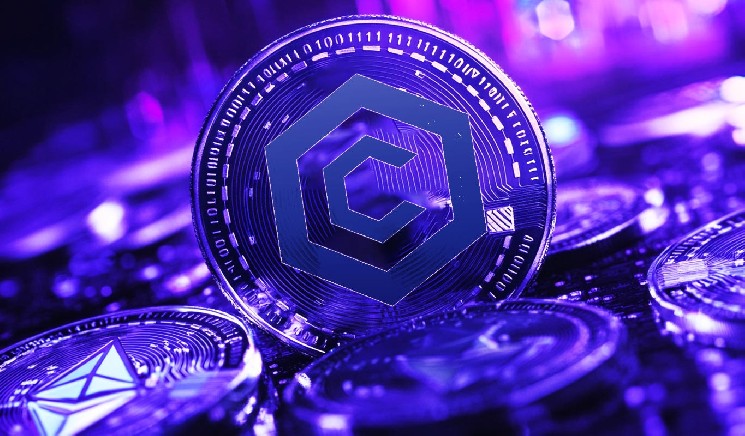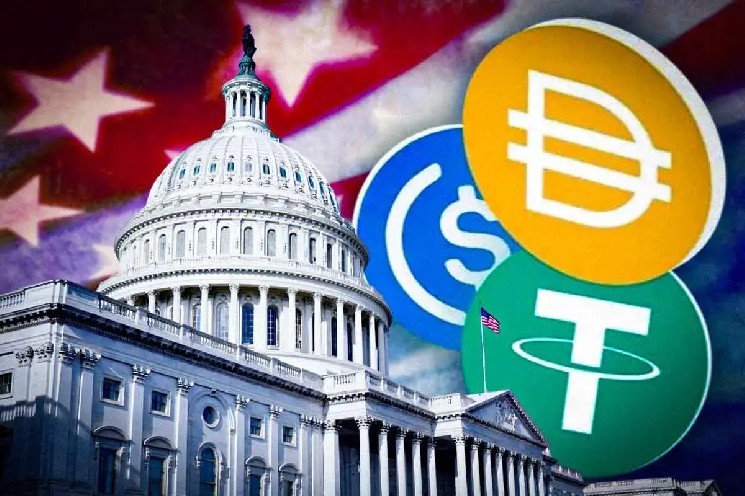Blocks & Headlines: Today in Blockchain - [June 02, 2025]
As the blockchain and cryptocurrency space continues its rapid evolution, daily developments underscore both the transformative potential and the persistent challenges facing decentralization, digital assets, and distributed networks. In this edition of , we profile five disparate but interlinked stories:
Together, these stories highlight recurring themes in 2025’s blockchain ecosystem: the imperative for network reliability, the race for innovation, the geopolitics of , the maturation of products, and nascent synergies between and AI. In an op-ed style, this briefing not only summarizes the core announcements but also provides critical analysis on their broader implications for , , , , and stakeholders.
Concluding remarks synthesize key takeaways, offering a forward-looking lens on how these disparate threads may coalesce in the coming months.
On [Insert Date], the blockchain experienced a multi-hour disruption that temporarily halted transaction finality, smart contract execution, and wallet functionalities across its network. Reports from indicated that users of TON wallets—encompassing everything from peer-to-peer transfers to decentralized application (dApp) interactions—encountered failed transactions, delayed block confirmations, and intermittent connectivity to validator nodes. The TON Foundation promptly acknowledged the issue via social media, attributing the outage to a that emerged in a recent protocol upgrade. Engineers within the TON developer community collaborated to deploy a hotfix to the core codebase, resulting in a network restart that restored normal operations after approximately six hours of downtime. Node synchronization metrics returned to baseline within three block confirmations post-restart.
Cointelegraph
From a technical standpoint, TON’s outage underscores perennial risks associated with rapid protocol iteration and the complexities of maintaining consensus across a broad validator set. The appears to have been introduced during the rollout of , which aimed to optimize sharding mechanisms and improve transaction throughput. Testnet simulations had failed to surface the defect, likely due to the difference in validator diversity and network latency between test environments and the live mainnet. Once transactions began queuing with unexpected sequencing failures, validator nodes entered a stalemate, unable to finalize new blocks without a synchronized view of the network state.
Key mitigation steps included:
Network reliability is foundational to decentralized finance (). Even brief outages can cascade into substantial financial risks:
While no blockchain is immune to outages, comparative uptime metrics offer perspective:
In this landscape, TON’s outage aligns more closely with Solana’s history of high-throughput growing pains rather than Ethereum’s steadier pace of upgrades. That said, the swift patch and transparent communication by the TON Foundation demonstrate a commitment to operational excellence—a positive signal for long-term trust.
The TON incident invites a deeper discussion on the delicate balance between pushing the envelope—through rapid feature releases, sharding experiments, and consensus enhancements—and maintaining rock-solid network stability. Several considerations emerge:
Ultimately, networks must recognize that is as critical as . As the broader ecosystem presumes continuous accessibility for lending, staking, and yield generation, even a handful of hours offline can precipitate substantial financial ramifications. In my view, the path forward involves adopting pipelines, expanding testnet validator participation, and calibrating upgrade cadences to prioritize stability over feature velocity—especially as mass adoption intensifies demands on blockchain infrastructure.
In a move poised to reshape remittance corridors between the United States and Mexico, (XinFin Digital Contract Network) announced a strategic collaboration with —Latin America’s leading cryptocurrency exchange. As reported by , the partnership aims to harness XDC’s enterprise-grade distributed ledger technology (DLT) and Bitso’s liquidity infrastructure to enable near-instant, low-fee transfers of both fiat and stablecoins across the border. Under this model:
By leveraging XDC’s consensus and low-latency block times (~2 seconds per block), the partnership claims to facilitate transfers at , compared to legacy remittance providers charging on average.
Bitcoin.com
Several factors informed the selection of over alternative blockchains:
Bitso’s integration with XDC entails running dedicated , which host sizable reserves of stablecoins and native XDC tokens to facilitate on-chain settlement. These nodes participate in consensus by staking XDC and validating cross-border transaction batches, ensuring that liquidity is immediately available when recipients request withdrawals in pesos.
Mexico ranks as one of the world’s top beneficiaries of remittances, with inflows exceeding annually (2024 data). Approximately of U.S.—to—Mexico remittances currently journey through informal channels (e.g., cash-based hawala networks, informal exchange houses), driven by lower fees and unbanked recipients. Traditional money transfer operators (MTOs)—such as Western Union and MoneyGram—face persistent competition from fintech startups that promise faster settlement at reduced cost.
While the XDC–Bitso rail promises to undercut legacy MTOs, emerging threats and competitive pressures include:
By embedding a blockchain rail in everyday remittance flows, XDC and Bitso catalyze practical Web3 usage scenarios:
The partnership threatens to destabilize incumbent MTO market share by offering a trifecta of , , and —attributes that legacy players have struggled to match consistently. In markets where cross-border payments are a lifeline—for instance, families relying on remittance inflows to cover living expenses and education—this blockchain rail could become the de facto standard. Ultimately, we may witness a paradigm shift wherein blockchain rails gradually disintermediate correspondent banking corridors, relegating traditional players to niche or high-value bespoke services.
The synergy between and encapsulates how blockchain can obliterate longstanding frictions in cross-border finance. From a strategic lens, the partnership signals that:
Going forward, key metrics to track include on-chain transaction volumes on XDC tied to remittances, Bitso’s monthly active user (MAU) growth in Mexico, and comparative fee differentials versus MTO incumbents. If the XDC–Bitso corridor consistently delivers sub-1% fees with sub-minute settlement, it may precipitate a broader exodus from legacy channels. In my view, we stand at the cusp of a —one defined by on-chain rails, programmable liquidity, and a democratization of financial services across borders.
On [Insert Date], Tehran hosted a press conference announcing , scheduled for later in 2025. Coverage from the detailed the event’s scope, which aims to convene global thought leaders, industry practitioners, academic researchers, and policymakers to explore blockchain’s potential within the unique socioeconomic context of the Islamic Republic. According to conference organizers—under the auspices of the —the agenda will revolve around:
Notably, the conference will feature international delegates from Russia, China, Turkey, and several African and Southeast Asian nations—signifying an attempt to foster a multipolar blockchain discourse outside Western hegemony.
Tehran Times
Iran emerges as a paradox in the global mining map: while Western regulators impose stringent restrictions on cryptocurrency mining due to environmental concerns, Iran has leveraged its subsidized energy rates to foster a thriving—but controversial—mining industry. As of early 2025, estimates suggest Iran hosts between of worldwide Bitcoin mining hash power. Government-authorized mining farms benefit from preferential electricity pricing (as low as ), although this has periodically led to nationwide power grid strains and rolling blackouts in major cities.
Iran’s regulatory stance toward cryptocurrencies has been oscillatory:
Against this backdrop, hosting an international blockchain conference signals Iran’s desire to shape regulatory norms, attract foreign investment (particularly from friendly nations), and position itself as a thought leader in a geostrategic domain increasingly dominated by China and Russia.
Iran’s global economic lifeblood remains oil and gas exports. Several Iranian state-affiliated firms plan to unveil pilot blockchain platforms that trace hydrocarbon shipments from onshore extraction to offshore terminals. Proponents claim these platforms will reduce documentation fraud, curtail illicit oil bunkering, and enhance transparency in joint ventures with international partners. For instance, a collaboration between and a local blockchain startup——may introduce smart contract-based e-bill of lading (e-BOL) systems, decreasing shipment reconciliation times by .
Dissenting views emerged around the feasibility of a government-backed stablecoin—tentatively dubbed the . Advocates argue that a DRL, built on a permissioned blockchain overseen by the Central Bank of Iran (CBI), could streamline interbank settlements, facilitate retail e-commerce, and serve as a bulwark against inflationary pressures on the rial. Critics, however, caution that implementing a DRL requires advanced digital identity infrastructure—still nascent in parts of the country—and robust anti-fraud mechanisms to prevent illicit flows. The CBI’s deputy governor indicated that “comprehensive feasibility studies” and pilot tests would precede any DRL launch.
Several leading computer science departments presented papers on —especially relevant as quantum computing threats to Elliptic Curve Digital Signature Algorithm (ECDSA) loom on the horizon. Researchers at Sharif University showcased a novel protocol optimized for low-power IoT devices—potentially enabling blockchain consensus on constrained hardware platforms in remote areas.
Perhaps the most geopolitically charged segment involved discussions on using blockchain to facilitate sanctioned trade with select allies. Delegates from Russia and China shared insights on bilateral crypto-oil transactions executed via over-the-counter (OTC) channels using Bitcoin and Ethereum derivatives. Observers speculated that Iran seeks to position blockchain as a strategic lever to circumvent traditional SWIFT payment channels, albeit under the watchful eye of the U.S. Treasury’s Office of Foreign Assets Control (OFAC).
By convening delegates from Eurasia and Africa, Iran attempts to cultivate a that challenges Western-led frameworks (e.g., Financial Action Task Force’s updated crypto guidance). This aligns with broader geopolitical currents—where Russia’s “CryptoRuble” discussions and China’s digital yuan pilots exemplify state-led pushes toward blockchain sovereignty. If effective, Iran could anchor a regional hub for blockchain finance, especially for nations under U.S. sanctions seeking alternative payment rails.
Yet, a major obstacle remains: the lack of among participating countries. While Iran’s ICT Ministry may craft permissive crypto regulations to attract foreign capital, a lack of clarity on AML/KYC protocols could deter institutional investors. For instance, delegates from the —where crypto regulation is more advanced—warned that Iran must adopt internationally recognized AML standards or risk isolation from formal financial networks.
The conference spotlighted an emerging Iranian blockchain startup scene—companies such as , , and —seeking to position the nation as a MENA blockchain innovation hub. However, talent flight remains a challenge, as many top Iranian developers migrate to Dubai, Istanbul, or European centers for better infrastructure and capital access. The success of the conference in retaining and incentivizing homegrown talent will be a critical litmus test.
Iran’s decision to convene its first international blockchain conference reflects an astute recognition of blockchain’s strategic value. By foregrounding energy sector use cases, sovereign stablecoin exploration, and cryptographic research, the conference organizers demonstrate a nuanced approach—one that balances economic pragmatism with national sovereignty interests.
However, several caveats merit consideration:
Ultimately, the 1st International Blockchain Conference will serve as a bellwether for Iran’s ability to integrate blockchain into its economic and geopolitical strategies. If sessions yield actionable collaborations—especially in energy traceability and digital rial frameworks—Iran could inch closer to carving out a niche in a blockchain ecosystem increasingly diversified along national lines. In my view, the jury remains out: success depends less on the spectacle of sovereign ambition and more on the execution of pilot projects, regulatory clarity, and sustained engagement with the global blockchain community.
On [Insert Date], disclosed that , a seasoned fintech entrepreneur and early investor in several high-profile startups (including , , and ), has joined as a . Soil, a burgeoning in the sector, provides users with on-chain strategies to earn returns on stablecoin holdings—leveraging automated liquidity provisioning, algorithmic market-making, and overcollateralized lending. Finn’s onboarding follows Soil’s $12 million Series A raise led by , with participation from other institutional backers.
Under the terms of the agreement:
PR Newswire
Stablecoins—crypto assets pegged to fiat currencies (e.g., USDC, USDT, DAI)—have emerged as the , facilitating seamless swaps, collateralized lending, and algorithmic arbitrage. Yet, holding idle stablecoins in wallets yields zero return, prompting demand for platforms that can juggle multiple yield-generation strategies:
Soil’s value proposition lies in its that dynamically allocates stablecoin deposits across multiple DeFi primitives to maximize net yield—optimizing for metrics like after trading fees, gas costs, and impermanent loss considerations.
Given this background, Finn brings:
Soil’s platform features:
The stablecoin yield sector has matured significantly since 2021’s early yield farming craze. Key players include:
Stablecoin yield platforms epitomize —democratizing access to sophisticated capital markets strategies once reserved for hedge funds and institutional traders. Yet, holders must grapple with several interrelated risks:
Still, the entrance of a fintech luminary like signals confidence in Soil’s architecture and growth strategy. Finn’s track record suggests a keen eye for platforms that can bridge innovations with legacy finance demands. If Soil successfully navigates regulatory guardrails and continues to refine its algorithmic strategy engine—balancing yield with security—it could emerge as a leader in the category. For users seeking to earn above-market returns on their stablecoin holdings without yielding full control to centralized custodians, Soil represents a compelling proposition—provided they remain cognizant of the multifaceted risks inherent in DeFi.
On [Insert Date], reported that , a blockchain-focused AI infrastructure startup, unveiled —the world’s first model designed to accelerate artificial intelligence workloads across a distributed network of GPU nodes. Unlike centralized cloud providers (e.g., AWS, Google Cloud, Azure) that aggregate GPU resources in monolithic data centers, GDepin leverages a peer-to-peer marketplace where GPU owners (from individual data scientists with spare compute capacity to enterprise GPU farms) can rent out idle GPU time to AI practitioners.
Key attributes of GDepin include:
PR Newswire
GPU providers—ranging from individual researchers with NVIDIA RTX 3090 cards to enterprise farms boasting NVIDIA H100 clusters—register their nodes on GDepin’s on-chain directory. Each node undergoes an initial benchmarking process:
These metrics are recorded on GDepin’s -based smart contracts (via for scalability), forming the basis for dynamic pricing models.
Data scientists submit AI workloads—such as model training on custom datasets or large-scale inference tasks (e.g., polluting a diffusion model for image generation)—through GDepin’s web interface or CLI. The system:
Upon task execution, GPU nodes must submit —including:
Once proofs pass validation via PoC smart contracts, GDRTokens are released from escrow to the provider’s wallet.
Post-execution, GDepin’s middleware aggregates results from all shards—reconciling gradient updates for training jobs or collating inference outputs. Final model checkpoints or inference payloads are securely delivered to the user via encrypted channels, with integrity attested through on-chain hash comparisons.
The unveiling of GDepin marks a significant inflection point in AI-blockchain convergence:
Academic institutions often face budget constraints that limit access to high-performance computing clusters. GDepin offers a pay-as-you-go model where research labs can train large language models (LLMs) or generative adversarial networks (GANs) without investing millions in hardware. Early adopters may include:
Small AI startups—developing everything from computer vision pipelines to natural language processing (NLP) tools—can harness GDepin for cost-effective MVP development:
Projects aiming to build fully decentralized AI applications—such as on-chain inference for —can integrate GDepin’s PoC layer to ensure transparency and verifiability. Potential use cases:
Despite GDepin’s bold vision, several challenges merit scrutiny:
GDepin’s introduction by underscores a broader industry trend: blockchain-native compute layers as enablers of decentralized AI. This has several strategic implications:
The unveiling of by marks a pioneering step in coalescing blockchain and AI infrastructure, yet its ultimate success hinges on addressing key execution risks:
Despite these hurdles, GDepin’s vision resonates with broader industry imperatives: , , and to compute. In the same way that rollout reimagined consensus, or how like redefined token exchange, GDepin aspires to redefine how AI workloads are provisioned and priced. For independent researchers, mid-sized startups, and emerging markets where centralized cloud costs remain prohibitive, GDepin could become a game-changer—fueling a new wave of AI innovation that transcends geographic and economic barriers.
As of [Insert Date], the blockchain and cryptocurrency landscape remains a tapestry of interwoven innovations, experiments, and strategic maneuvers. From the resilience of layer-1 networks (TON) to remittance rails (XDC–Bitso), from geopolitical blockchains (Iran conference) to DeFi yield expansions (Soil), and culminating in the AI-Blockchain nexus (GDepin), several cross-cutting themes emerge:
-
Balancing Decentralization with Operational Resilience: Projects must continue refining governance and validator structures to maintain uptime without sacrificing the censorship-resistance ethos that distinguishes blockchain from traditional systems.
-
Regulatory Engagement as an Ongoing Imperative: Whether in the context of cross-border remittances (XDC–Bitso), sovereign stablecoins (Iran), or DeFi yield protocols (Soil), proactive dialogue with regulators—both domestic and international—will mitigate compliance risks and foster sustainable growth.
-
Expanding the User Base Through Practical Use Cases: Real-world pilots—remittance rails, energy supply chain traceability, decentralized compute for AI—bridge the gap between speculative hype and tangible value creation, attracting both retail and institutional participants to the blockchain ecosystem.
-
Elevating Security and Trust Paradigms: Outages (TON), PoC guarantees (GDepin), and smart contract insurance (Soil) illustrate that as blockchain matures, trust will be anchored not only in code immutability but also in credible security protocols, insurance mechanisms, and transparent audit trails.
-
Cultivating Talent and Knowledge Transfer: Conferences like Iran’s will be instrumental in galvanizing local ecosystems, preventing brain drain, and fostering cross-border collaborations. Likewise, strategic hires—like Jamie Finn at Soil—signal that seasoned leaders can catalyze early-stage growth, attract capital, and enhance governance structures.
As we close this blockchain briefing, the overarching narrative is clear: blockchain’s real advantage emerges when individual use cases—be they in remittances, DeFi yield, or decentralized AI compute—are woven together into a coherent tapestry of interoperability, trust, and user-centric design. Stakeholders must prioritize network reliability, regulatory alignment, and inclusive access to ensure these individual threads strengthen the fabric of a truly decentralized future.
Thank you for engaging with this edition of Blocks & Headlines: Today in Blockchain. We look forward to keeping you apprised of the latest trends, strategic shifts, and technological milestones as the blockchain revolution forges ahead.








